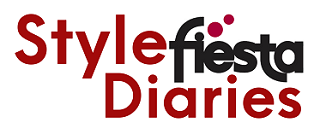
Exploring Innovative LED Lighting Solutions: A Guide to Wholesale LED Strip Lights and LED Modules
Introduction to Modern LED Lighting Technologies
LED lighting has transformed the way we illuminate spaces, both residential and commercial. From its early days as a simple indicator light, LED technology has evolved dramatically. Today, LED lighting solutions offer versatility, energy efficiency, and long-lasting performance. Industries across the board from retail and hospitality to manufacturing and architecture are finding new ways to integrate LED products into their environments to enhance visibility, save energy, and create appealing atmospheres.
Understanding the different types of LED lighting is important to make informed choices. Two popular categories are LED strip lights and LED modules, each with distinct characteristics and uses.
Understanding Wholesale LED Strip Lights
LED strip lights are flexible circuit boards populated with tiny LEDs, often equipped with adhesive backing for easy installation. When sourced as wholesale led strip lights, these strips offer cost advantages for projects requiring significant quantities, such as large-scale commercial lighting or event setups.
What makes LED strip lights particularly appealing is their adaptability. They can fit into tight spaces, curve around corners, and even be cut to custom lengths. This flexibility makes them useful for applications ranging from accent lighting under cabinets and along staircases to illuminating signage or architectural features.
When selecting wholesale LED strip lights, several factors come into play. The brightness (measured in lumens), color temperature (warm to cool white), waterproof rating, and power consumption are essential to evaluate. The quality of the adhesive backing and the ease of installation may also impact the overall experience. Buyers often look for strips that balance brightness with energy efficiency and longevity.
Diving into LED Modules
LED modules are compact lighting units that typically consist of one or more LEDs mounted on a small circuit board, often encased in a protective housing. Unlike flexible strip lights, led module units tend to be more rigid and are designed for specific mounting and installation methods.
These modules provide uniform lighting and are commonly used for backlighting, signage, display cases, and outdoor lighting fixtures. Their modular nature allows for easy replacement and maintenance, which can be particularly beneficial in commercial environments.
Technically, led module products vary in size, brightness, voltage, and lens type. Some modules include features such as wide-angle lighting or specific color options to cater to particular lighting needs. Their durability and consistent output make them a reliable choice for applications requiring stable and bright illumination.
Comparing LED Strip Lights and LED Modules
Though both LED strip lights and LED modules use LED technology, their designs and typical applications differ. Strip lights’ flexibility allows them to be used in dynamic layouts and places where the lighting needs to follow curves or tight spots. Conversely, LED modules offer more structured and robust lighting solutions suitable for flat or fixed surfaces.
In terms of installation, strip lights are often easier to handle due to their adhesive backing and ability to bend. LED modules might require mounting brackets or screws and are typically favored when a precise, focused light source is needed.
Choosing between the two often depends on the project requirements. For projects involving decorative or indirect lighting with varying shapes, strip lights are a practical choice. For signage, outdoor fixtures, or applications needing robust and consistent light, LED modules are often preferred.
Practical Insights for Procurement
When sourcing LED lighting products wholesale, several practical considerations can make a difference. Product quality, including LED lifespan, color consistency, and build materials, should be prioritized to avoid frequent replacements or performance issues.
Technical support from suppliers and access to certifications such as CE or RoHS may provide additional peace of mind regarding product safety and compliance with industry standards.
From a financial perspective, the upfront cost is just one part of the equation. Energy efficiency and durability can translate to savings in the long run, especially in commercial or industrial settings where lighting is used extensively.
Future Trends in LED Lighting Technology
The LED lighting industry continues to innovate. Advances in materials and chip technology are improving efficiency and brightness while reducing power consumption. Integration with smart technology enables dynamic lighting control through apps or automation systems, offering greater flexibility and convenience.
Sustainability is also becoming a core focus. LED lighting’s already low energy consumption is being paired with eco-friendly materials and recycling programs to reduce environmental impact further.
Conclusion
Exploring the world of LED lighting solutions reveals a range of products suited to different needs and environments. Wholesale LED strip lights offer versatility and ease of use, ideal for flexible and decorative lighting projects. LED modules provide reliable and focused illumination for signage and outdoor applications.
Choosing the right LED solution involves understanding both the technical features and practical considerations, ensuring the lighting not only looks good but performs efficiently over time. As LED technology continues to advance, it opens new opportunities for smarter, more sustainable lighting options.
